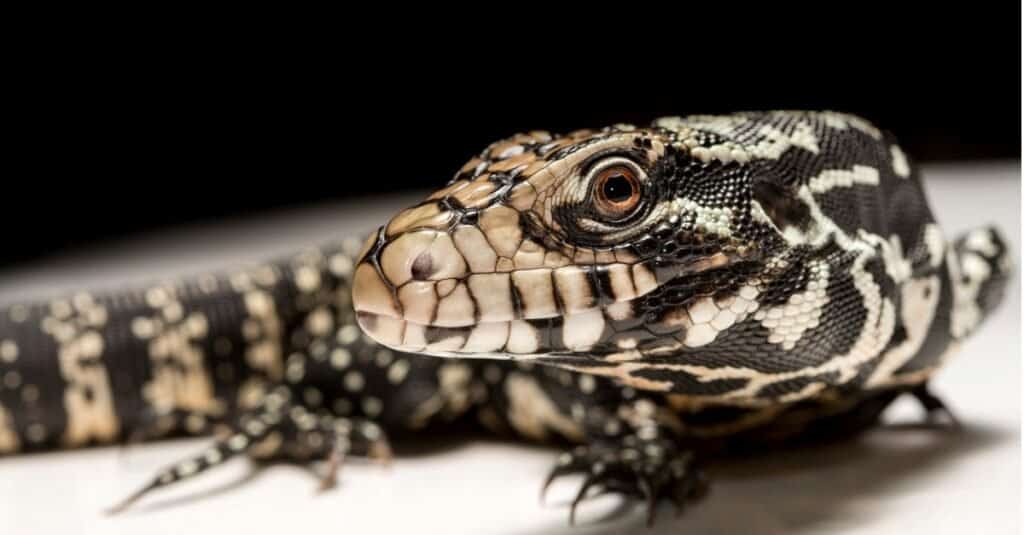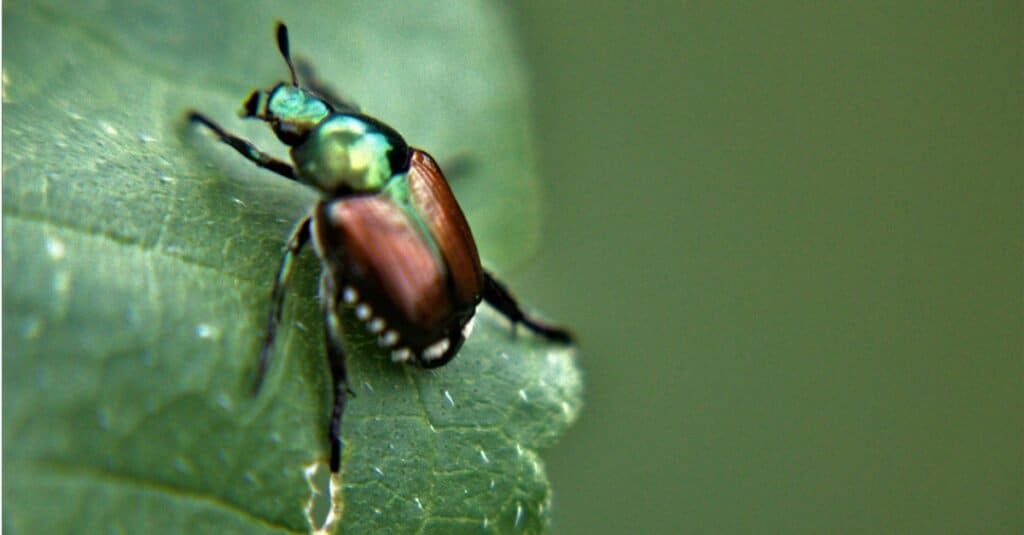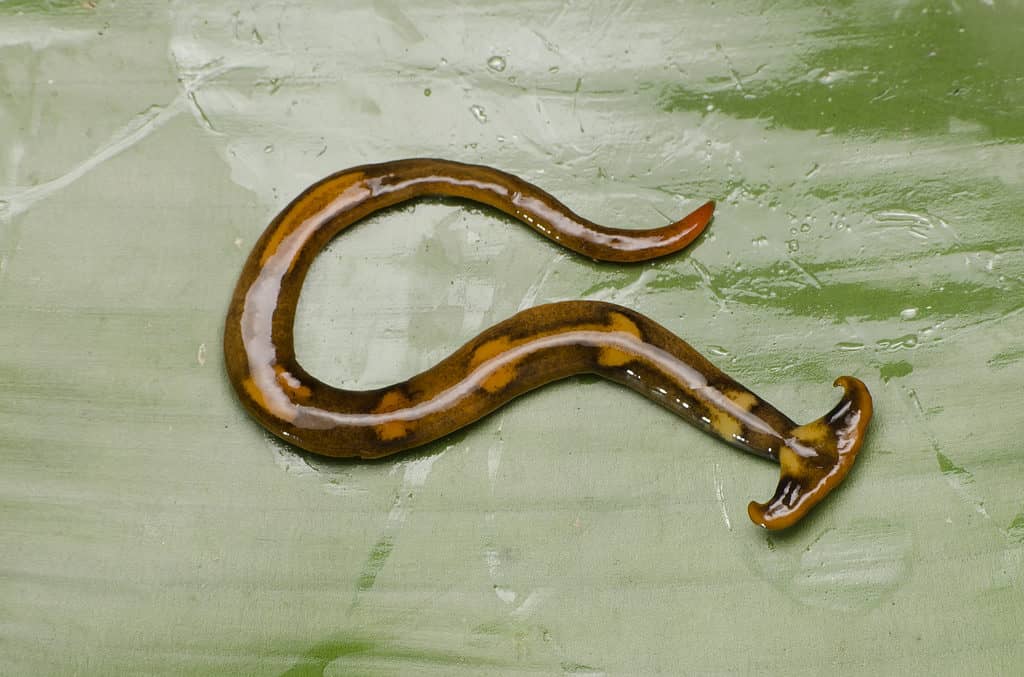Georgia is an absolutely gorgeous state in the southeastern part of the United States. No matter what kind of outdoor adventures you enjoy, you can find them in this state. There are gorgeous beaches along the southeast coast, forests that you can hike all along through, and even mountainous regions that are breathtaking. All of this beautiful nature also makes it the perfect home for tons of amazing wildlife. However, not all of the wildlife in Georgia is meant to be there. In fact, there are some incredibly invasive species threatening the wildlife in Georgia. Do you happen to know what species they are?
If you’re curious to learn about three of these invasive species and what is being done to stop them, then keep reading on. We cover all of that and more to help you learn about Georgia’s gorgeous wildlife and what we can all do to protect it.
1. Tegu Lizards

The tegu lizard is a native species to
South America
and has been posing a major threat to Georgia’s wildlife.
©iStock.com/Rafael Cutó
Tegus are a species of lizard that has been spotted throughout Georgia in recent years. It is considered an invasive species to the state as it originates in South America. These lizards can typically grow to be anywhere between 10 pounds or more and are around four feet long. The Argentine black and white tegu is the largest of the species. So what makes this species so dangerous to the state? Well, for starters, the lizard is responsible for eating tons of protected species’ eggs. They are not picky eaters and will eat the eggs of quails and turkeys as well as American alligator eggs and gopher tortoises.
However, it’s not just their eating habits that are causing problems for the state of Georgia. It is also the fact that they are capable of spreading exotic parasites and illnesses to many of the state’s wildlife. They are also capable of spreading bacterial infections to crops throughout the state as well. There has been research done that shows that tegus can carry salmonella. You can usually recognize a tegu lizard by their black and dark grey appearance coupled with white speckled bands across their backs and tail. Hatchlings, on the other hand, will have bright green heads, however, this color begins to change after one month.
2. Japanese Beetle

This invasive species of
beetle
are known for its green-colored bodies and the extensive amount of damage they inflict on plants in the state.
©iStock.com/Justin Tahai
The Japanese beetle is another greatly invasive species that has made its way into Georgia. As you can tell by the name, this beetle is not native to the United States. Instead, they are from Japan. It is believed that they were accidentally imported here. They were first seen back in 1916 in the state of New Jersey and have slowly made their way down to Georgia.
Adult beetles are usually around one-half an inch long. You can easily recognize them because they have a quite distinct metallic green colored body along with wings that are a copper color. These beetles come out of the woodwork during the summer months. They are considered a highly threatening species because of the amount of damage they create to local crops. When it comes to crops, there is almost nothing that this beetle won’t eat. They are known to chow down on 300 different plants in total.
These beetles continue to feed on greenery until people’s lawns turn brown and the only visible parts left of the leaves of plants are the veins. They not only eat leaves, but they also feed on plant blossoms. This results in the blossoms getting destroyed and stunted in the process. As a result, they can no longer grow. From sunflowers to poison ivy, there is nothing that this beetle won’t munch down on.
3. Hammerhead Worms

This invasive species of
worms
in Georgia get its name from the distinctive shape of their heads which looks like a hammer.
©zaidi razak/Shutterstock.com
Finally, we have the hammerhead worm which is a highly harmful worm. This worm is native to Southeast Asia, however, they have been found in the United States since the 1980s. Since they have been brought to the United States, they have continued to multiply and their existence has been causing a lot of problems in the state of Georgia. These worms are known for eating large numbers of earthworms. This is a big issue because earthworms as responsible for aerating the soil and fertilizing it. Without these beneficial worms around, the soil and plants alike begin to suffer.
In addition to consuming a large number of earthworms, these hammerhead worms are also known to secrete poisonous toxins. These toxins can even be harmful to humans if you happen to pick up a hammerhead worm. Finally, these worms have also been known to transmit harmful nematode parasites into the soil as well. Since they love humid environments, these worms are particularly active during the hot summer months in Georgia. They are also pretty sensitive to light, so they will usually only be visible at night.
What Is Being Done to Stop the Spread of These Invasive Species?
As we have gone over, there are lots of ways in which invasive species can create problems in a non-native environment. These invasive species can threaten the overall natural ecology of an area and destroy the wildlife and plants in the area. This in turn can kill off certain wildlife and can also destroy crops that both wild animals and humans depend on. As this is a very serious issue, you may be wondering what is being done to combat the spread of these particular species.
Let’s take a look at what is being done for each of these species in more detail:
Tegu Lizards
The Georgia Department of Natural Resources has taken the spread of tegu lizards very seriously. For starters, the DNR asks that all Georgia residents and visitors report sightings of these lizards. It doesn’t matter if the lizard is alive or dead, they still recommend reporting the sighting. In addition, the DNR also suggests that if you are able to do so safely, then you may trap a tegu lizard in a humane way and then contact wildlife officials. The DNR is also working with the U.S. Geological Society and Georgia Southern University to trap tegus in Toombs and Tattnall counties. By removing the lizards from the wild, they are then able to research the populations effectively as well.
Japanese Beetle
For Japanese beetles, the most effective way to stop them is to catch them as soon as they arrive in your backyard or on your crops. It is suggested that you handpick the beetles off of your plants and then drown them in soapy water. This is a good option if it happens to be the start of a small infestation. This can in turn prevent more beetles from coming to the area as well. Insecticides are another way to control the population of these beetles.
Hammerhead Worms
If you happen to spot hammerhead worms in your yard, then it is important to get rid of them immediately! The first thing you should do if you find one is to take a photo of the worm. Then be sure to contact the wildlife officials about the appearance of this worm in your area so that they can document it. In order to keep the hammerhead worms away, you’re going to want to treat your soil with boric acid. This creates an acidic environment for the worms and they can’t survive it. You’ll want to continue to do this every two weeks until you no longer find any hammerhead worms in your soil.
Up Next…
- Animals in Georgia
- Invasive Species in the United States: The Big List of Invasive Animals
- Why are Invasive Species Dangerous to the Environment?
The photo featured at the top of this post is © zaidi razak/Shutterstock.com
Thank you for reading! Have some feedback for us? Contact the AZ Animals editorial team.






